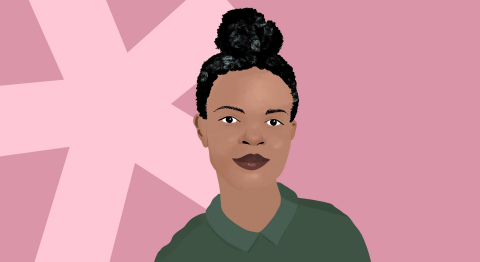Mehreen Afzal has been deployed for the Somali emergency for a period of two/three months as a Protection Officer for UNHCR, Dadaab, Kenya.
Dadaab: 1300 nieuwe vluchtelingen per dag
De Luxemburgse Mehreen Afzal werkt voor de VN-vluchtelingenorganisatie (UNHCR) in Dadaab, in Kenia. Dadaab is het grootste vluchtelingenkamp ter wereld. Het kamp komt de laatste weken veel in de actualiteit door de aanhoudende vluchtelingenstroom, veroorzaakt door de hongersnood in de Hoorn van Afrika. Mehreen houdt voor MO.be een Engelstalige blog bij van haar impressies en ervaringen in dit kamp.
There is an eery sense of calm as you enter the reception centers in Dagahaley, Ifo and Hagadera refugee camps. Although the families line up in the hundreds, they say very little, attending only to their young children and keeping their eyes low, waiting patiently for their turn. Their tired leathery faces and discreet manner provides a glimpse of their harrowing journey for weeks on foot into Kenya.
I arrived in Dadaab last wednesday morning with a UN charter flight from Nairobi swarming with journalists from across the globe. We landed on the airstrip in Dadaab and were shuttled along a fifteen car convoy into the gated UNHCR/WFP compound. The compound is buzzing with people, UN agencies, NGO partners, journalists all wanting to gather information and find a way to assist. The atmosphere is somehow electric even if puzzling. The famine in Somalia has garnered unprecedented interest, with much of the focus on Dadaab refugee camps. Despite the fact that these camps exist since twenty years, they seem to be the closest the international press and humanitarian agencies can get to Somalia. A step closer to the truth perhaps..
I have now visited all three camps who together receive more than 1300 new arrivals daily. Two thirds of the new arrivals are women and children, many having travelled in groups to flee the drought in Somalia. A young somali women at Hagadera camp explained that the men stay behind to guard their land and property. When asked whether she expects her husband to follow her to Dadaab in future, she said no. She explained that men in Somalia were not free to leave the country.
One of the most difficult things to cope with in this environment are the number of severely malnourished children, both among the new arrivals and those already present in the camps. They are easily detect: burnt white blond hair, swollen feet and very little energy. They are bundled up and slung across the back of their mothers, their little heads bobbing from behind. They are quiet, they do not complain, only whimpering slightly when they move position. It is heartbreaking, particularly since most of them are under five.
At the distribution point at Ifo reception center a young mother with her five children aged between four and ten carry the cooking utensils, mats, plastic sheeting and other items given to them. A young boy of ten carries the greatest load as they mother wraps both her babies to her front and back. They will walk to the outskirts of the camp to find a plot of land to construct their makeshift shelter pending the allocation of a more sustainable tent to live in.
Maak MO* mee mogelijk.
Word proMO* net als 2781 andere lezers en maak MO* mee mogelijk. Zo blijven al onze verhalen gratis online beschikbaar voor iédereen.
Meer verhalen
-
Nieuws
-
Nieuws
-
Column
-
Interview
-
Nieuws
-
Column









 Oxfam België
Oxfam België Handicap International
Handicap International